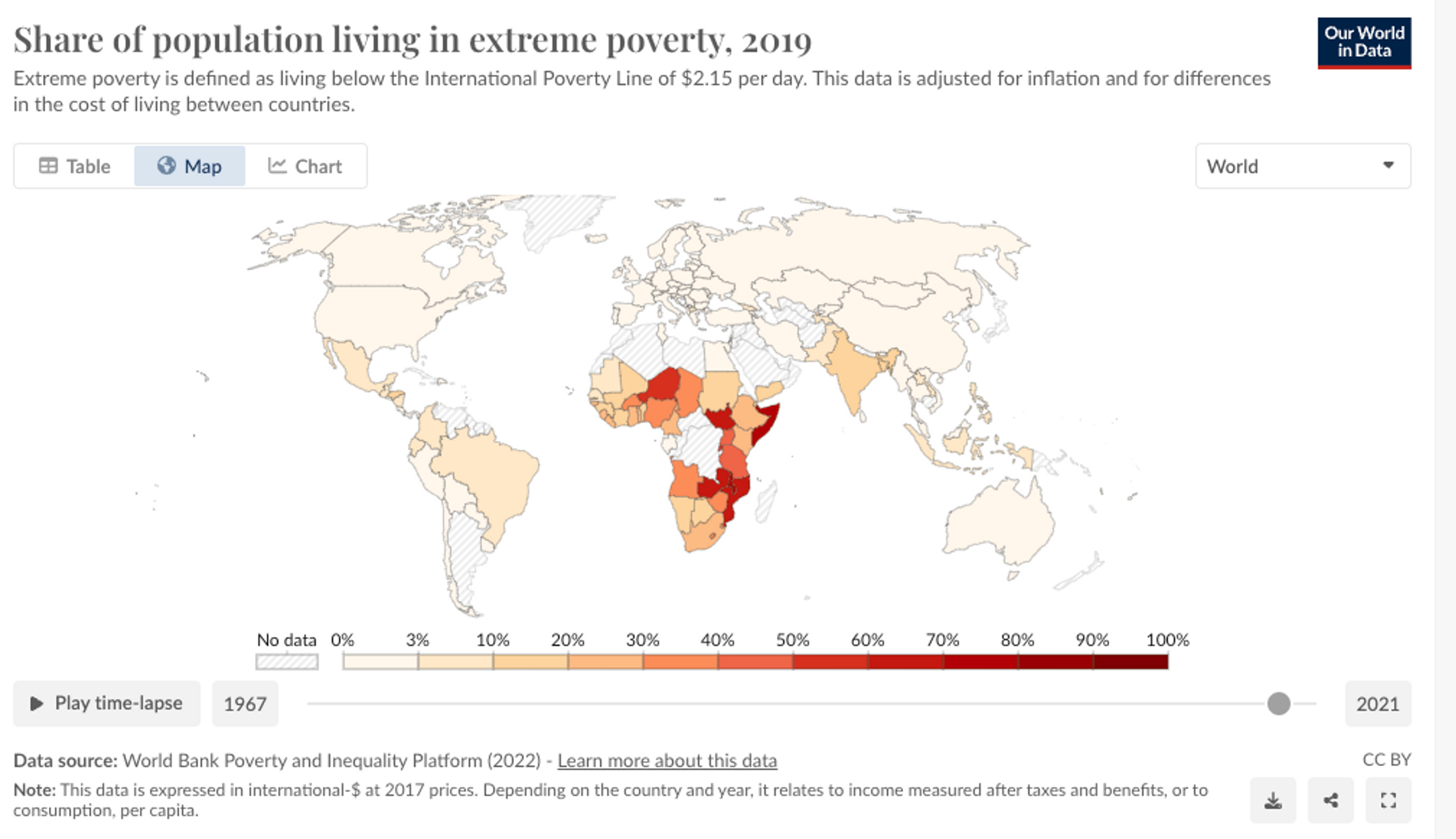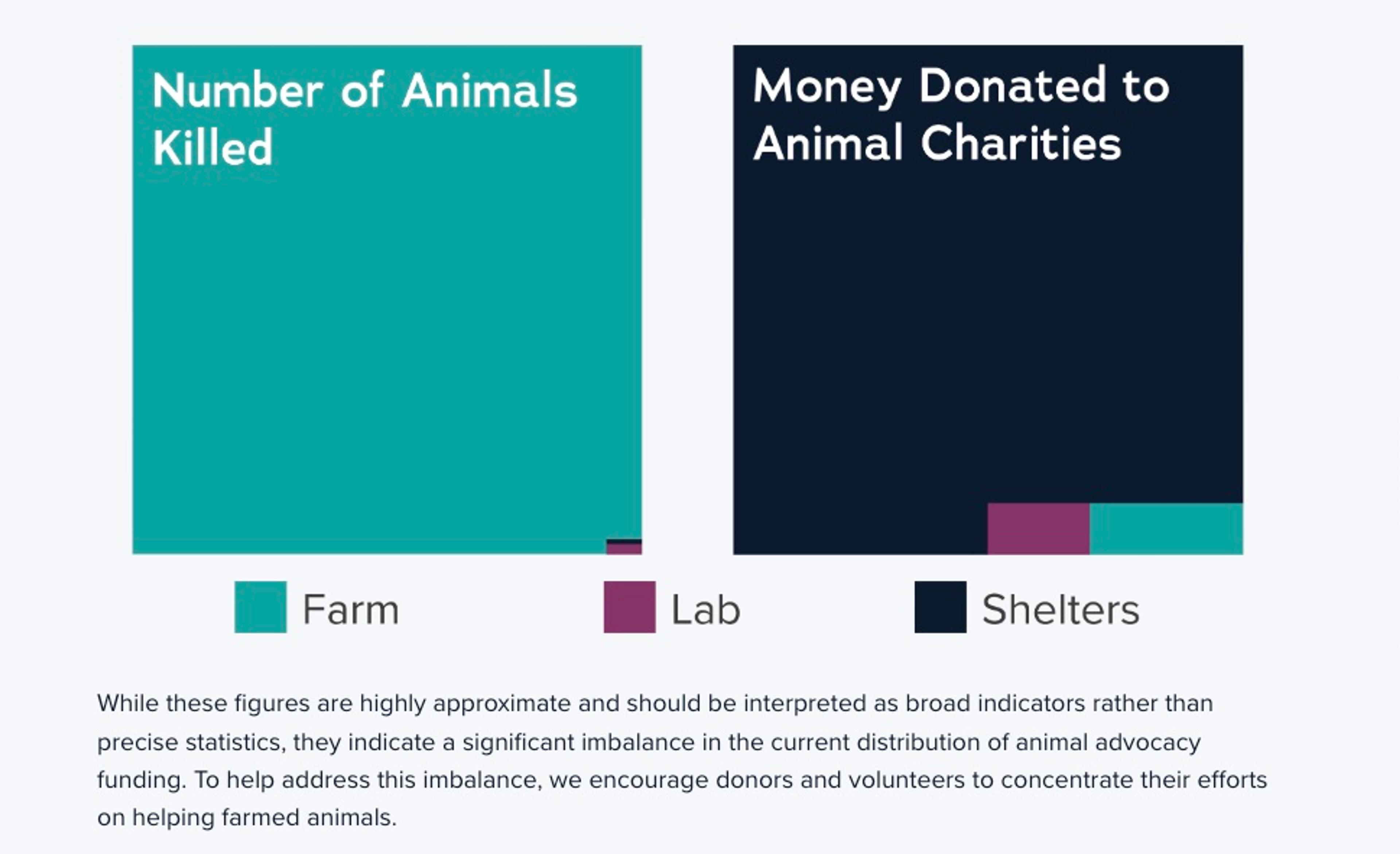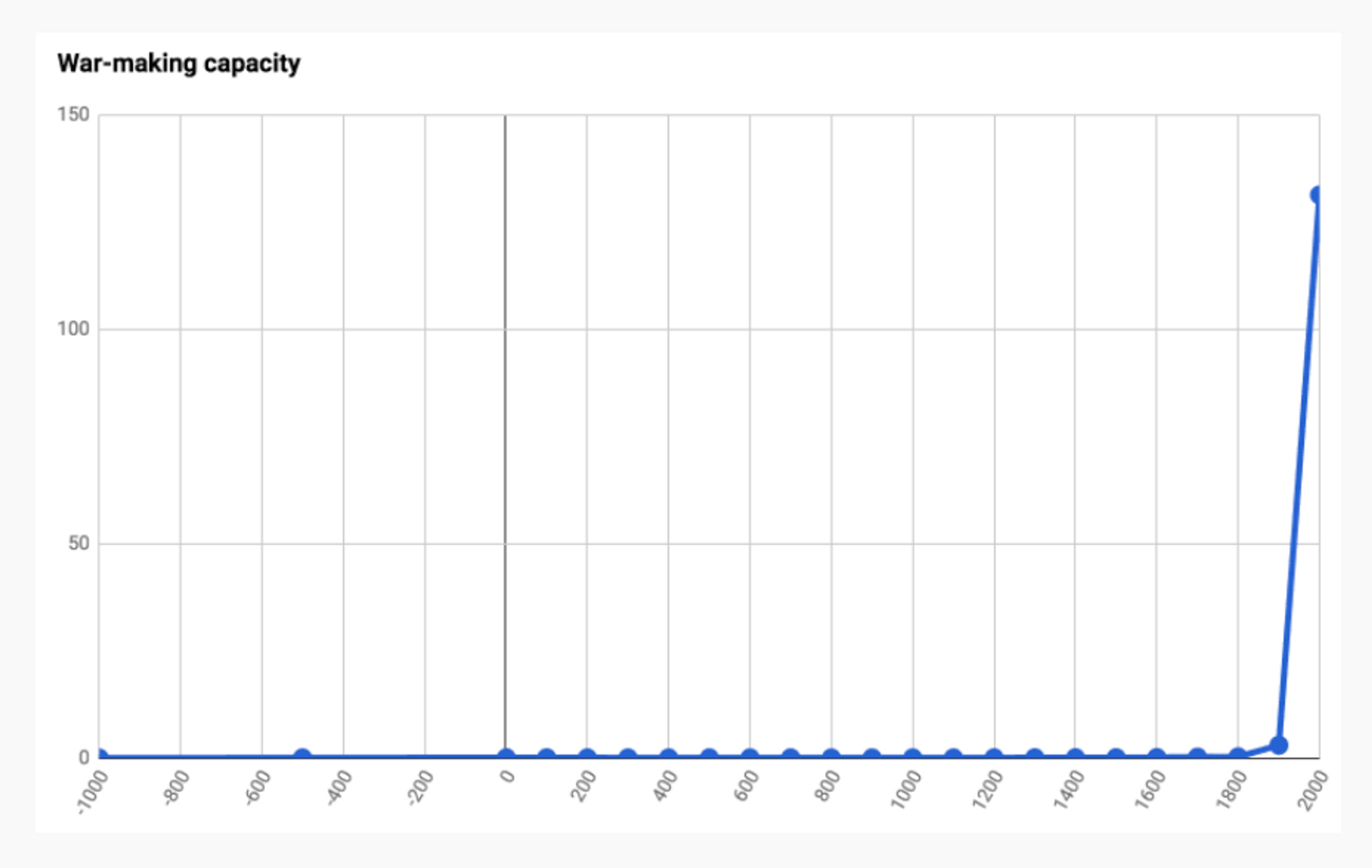High-impact causes we recommend supporting
There’s no shortage of problems in the world. So how do you choose what to focus on first?
Many people choose to support work on issues they hear a lot about, or that they’ve had personal experience with. However, the issues we hear the most about aren’t necessarily the ones where we can have the greatest impact. While we think donors should give in line with their values and worldviews, it turns out that some problems are both larger and easier to solve than others. Therefore, if you want to make a sizable dent in the world’s problems, we recommend choosing a high-impact cause area that best aligns with your values.
Note: Please note that this video was recorded in 2021 and may contain some out-of-date information; we’ve also since renamed our cause areas to better reflect the types of projects they include. (The text below reflects our current cause area summaries.)
The high-impact cause areas we recommend
Global health and wellbeing
If you want to help people who are suffering now, one of the highest-impact cause areas you can support is global health and wellbeing: supporting people around the world who are living in poverty or suffering from preventable disease. Here’s a quick summary of why:
- Poverty and disease affect a lot of people. One out of every ten people suffers from extreme poverty. Millions die every year — including 15,000 children every day — from illnesses that could have been prevented. The child death toll alone is the equivalent of about 22 jumbo jets crashing daily.
- We know how to help, but we need more resources. There are proven, evidence-backed treatments and preventative measures for some of the worst diseases affecting those living in extreme poverty — but the organisations implementing them don’t have enough funding to help everyone in need.
- Some of the best solutions are highly cost-effective, meaning your donations do a lot. Because your dollar goes further overseas, sending money to lower-income countries can be 10 or even 100 times more impactful than what your money could accomplish in your home country. Additionally, many lifesaving interventions are surprisingly inexpensive ($5 for a malaria net; $1 for a vitamin A supplement to reduce child deaths). Combined, these two factors mean you can affect a lot of people with even a small donation.

From: https://ourworldindata.org/poverty (using data from World Bank Poverty and Inequality Platform, 2022)
Animal welfare
If you want to reduce suffering in the world, regardless of who is experiencing it, one of the highest-impact cause areas you can support is helping farmed and wild animals. Here’s a quick summary of why:
- Animal suffering affects a lot of lives. In the US alone, almost 10 billion land animals are killed every year, which equates to around a million every hour. Globally, as of 2022, the yearly death toll is over 80 billion. And at any given time, an estimated 31 billion land animals are being farmed, usually under conditions of extreme suffering. Animals also suffer in the wild.
- The solutions available can yield BIG results. Corporate campaigns, which aim to change the behaviour of large corporations, often affect millions of animal lives when successful. One 2018 estimate found that commitments from the 200 companies who had (as of 2016) promised to implement cage-free systems would result in the freedom of about 225 million hens from battery cage confinement each year. Corporate campaigns have also been shown to be highly cost-effective.
- We need more resources to implement these solutions and others. In 2022, animals and the environment combined received only 3% of total US charitable donations. Additionally, of the U.S. donations going to animal welfare, around 95% go to companion animal organisations such as shelters — even though 99.1% of the non-wild animals killed by humans in the US are farmed animals.

From: https://animalcharityevaluators.org/donation-advice/why-farmed-animals/
Reducing global catastrophic risks
If you want to help prevent future suffering (or even extinction) as well as large problems that could affect us today, one of the highest-impact cause areas you can support is the reduction of global catastrophic risks. Here’s a quick summary of why:
- Global catastrophic risks affect a lot of lives. Risks like nuclear war, uncontrollable AI, and engineered pandemics could affect not only everyone alive today, but everyone who could ever live, changing the trajectory of history.
- We need more funding to thoroughly understand these risks and develop tractable solutions. As of 2016, the international body responsible for the continued prohibition of bioweapons had an annual budget of just $1.4 million USD — less than the average McDonald's restaurant. And the amount humanity spends yearly on ice cream far exceeds what we spend on reducing risks to our survival.
- There are plausible solutions. While we don’t yet know how achievable some of these solutions are, it’s certainly possible to make progress on reducing catastrophic risks. Examples include:
- For preventing pandemics: Research and coordination efforts to increase pandemic preparedness across nations, including into areas like UV sterilisation, advanced personal protective equipment (PPE), and wastewater monitoring.
- For promoting beneficial AI: Finding and training talented people to solve concrete technical problems in making powerful AI safe and aligned with human interests, identifying promising ways to regulate AI companies, and advocating for responsible governance.
- For preventing nuclear war: Efforts to influence the policies of major nuclear powers through coordination with government, technical policy research, political lobbying, public advocacy, and track II diplomacy.

Accessed from: https://www.founderspledge.com/research/existential-risk-executive-summary; original source: https://lukemuehlhauser.com/industrial-revolution/#Tech (using data adapted from Morris, The Measure of Civilization, Princeton University Press, 2013)
What do these cause areas have in common and why does this make them high-impact?
You may have noticed a pattern here. All of the cause areas we recommend have a few things in common:
Scale
All of these problems affect many, many lives.
Neglectedness
All of these problems could use more resources.
Tractability
It’s possible to make progress on all of these problems.
Why do these three factors affect impact?
Consider this metaphor: With so much suffering in the world, each of us who wants to help is akin to a firefighter — with multiple fires burning all around them. Some are very large (affecting many people) and some are smaller (affecting fewer people). Some are easy to fight and some just seem to spread and spread no matter what you do. Given this difficult reality, which fire would you fight first?
Would you choose a fire that is:
A. Easy to fight; affecting few people
B. Hard to fight; affecting few people
C. Easy to fight; affecting a great many people
D. Hard to fight; affecting a great many people
Most people would likely agree that you’d have the most impact if you chose Fire C — a large fire (scale) that is also easy to fight (tractable) — before you tackle the others. If you instead begin by fighting a small and difficult-to-fight fire, you might use up all your resources and not actually do very much good. All the fires would continue to burn, and the people you could have helped by putting your resources towards Fire C would instead be consumed by flames while you unsuccessfully fought Fire B.
But what about neglectedness?
Well, imagine that Fire C is actually already being fought by a huge team of people. There are so many people working on fighting this fire that each additional person isn’t really adding much value. It’s also getting hard to coordinate efforts. In this case, it seems pretty clear that your resources would be better used elsewhere, right?
Similarly, some problems receive more funding relative to how pressing they are than others. You’ll likely have more impact if you give to a cause that is underfunded (needs more firefighters) than to a cause where the most promising interventions are already being funded.
Watch the video below to learn more about how the scale, neglectedness, and tractability framework can help us figure out which causes to support first.
How do the high-impact cause areas we recommend differ from each other in terms of scale, neglectedness, and tractability?
Importantly, none of the high-impact cause areas we recommend above rank highest on all three attributes of the scale, neglectedness, tractability framework. Each of them excel on various of these attributes that — when taken together — lead to them being impactful options. For example:
- Global health and wellbeing is large in scale compared to other causes, but is small in scale compared to animal welfare and global catastrophic risk reduction. However, global health and wellbeing is likely the most tractable of the three cause areas — there are proven, concrete interventions that we know save lives.
- Animal welfare is much larger in scale and much more neglected than global health and wellbeing, but much smaller in scale than global catastrophic risk reduction. On the flip side, it is less tractable than global health and wellbeing but more tractable than global catastrophic risk reduction.
- Global catastrophic risk reduction is by far the largest in scale of the three cause areas, as mitigating a threat like rogue AI could affect not just those living today but the entire future of humanity (and other species too)! However, while highly neglected relative to its potential consequences, it is much less tractable than the other two cause areas.
How might you choose among these high-impact cause areas?
We think the cause(s) you choose to support should depend on your particular worldview and values. Some donors choose to support only one of these causes, while others give to multiple. (If you want to split your donation across high-impact projects within all three causes — either equally or with your preferred allocation — you can donate to our All Causes bundle.)
To help you decide which cause(s) you might want to support, let’s consider what you might get with a $5,000 donation to a charity/fund working in each cause area. (Note that these are just examples of the type of work you might fund; the actual outcome will vary depending on where exactly you donate.)
If you donate $5,000 to a charity/fund working on global health and wellbeing, this could:
- Save a life. The charity evaluator GiveWell estimates that $4,000 – $5,500 donated to charities like the Against Malaria Foundation or Helen Keller International is enough to concretely save a child’s life.1
If you donate $5,000 to a charity/fund working on improving farmed animal welfare through corporate campaigns, this could:
- Improve the lives of at least 50,000 chickens through furthering cage-free commitments from industry. This is based on an estimate by the charity evaluator Founders Pledge (using data from 2016, 2018, and 2019) showing that for every $1 donated to highly effective corporate campaign work (such as the type engaged in by The Humane League) the living conditions of 10–160 chickens are significantly improved.2 We’ve taken the lower end of that range given the estimates are a couple of years old and early campaigns were particularly cost-effective.
If you donate $5,000 to a charity/fund working on reducing global catastrophic risks, this could:
- Fund about a week of research into problems like AI alignment, nuclear security, or biosecurity. For instance, you could help fund improved safety checks of AI systems before they are released to the general public, or support the search for effective policy interventions to mitigate nuclear risk. A week of research in these areas could be hugely impactful — perhaps the researcher stumbles upon a breakthrough or uncovers a key concept — or it might not be impactful at all. But the more funding for this type of research, the greater the odds of finding and implementing solutions to some of the biggest threats to humanity’s future.
So what are the takeaways here? The cause(s) you support depend on a variety of value judgements, and you might want to think about factors like:
Your comfort level with uncertainty vs. how much you value concrete outcomes
The weight you place on the number of lives affected
How you value human lives compared to nonhuman animal lives
How concerned you are about suffering right now versus in the future
These are difficult factors to think through. If you’re having trouble deciding, you’re not alone. Many people in our community have told us that decision paralysis about where to give initially prevented them from giving at all. If that’s you, we recommend simply splitting your donation among these high-impact cause areas via our All Causes Bundle (either equally or with your preferred allocation). You can also choose to donate to individual funds or charities within each cause area, if you prefer.
Overall, just remember that sometimes the goal of maximising (searching for the best possible action) can prevent us from taking action at all, and if we take no action, we’re really not maximising! The bottom line is that all of these cause areas are highly impactful and no matter which one(s) you choose to support, you’ll be doing a lot of good.
Why do we recommend these cause areas over others?
We base our recommendations on the research of impact-focused charity evaluators, who have found some of their most cost-effective donation opportunities in these areas. As illustrated by their scale, neglectedness, and tractability (along with other factors) they offer an incredible opportunity for donors to make a difference.
That said, there’s no shortage of important cause areas, and this isn’t meant to be an all-inclusive list. Cause prioritisation is an ongoing field, and there’s vibrant debate about how to approach it.
There’s also a few cause areas we think are very promising but for which we don’t yet have recommendations. We’ll be looking further into these cause areas and the organisations working within them soon.
Want to support work in these high-impact cause areas?
- Check out our cause area funds
- Check out our charity and fund recommendations
Your feedback
We appreciate any and all feedback that can help improve our work. Please let us know what you thought of this page and provide any suggestions for improvement using our content feedback form.